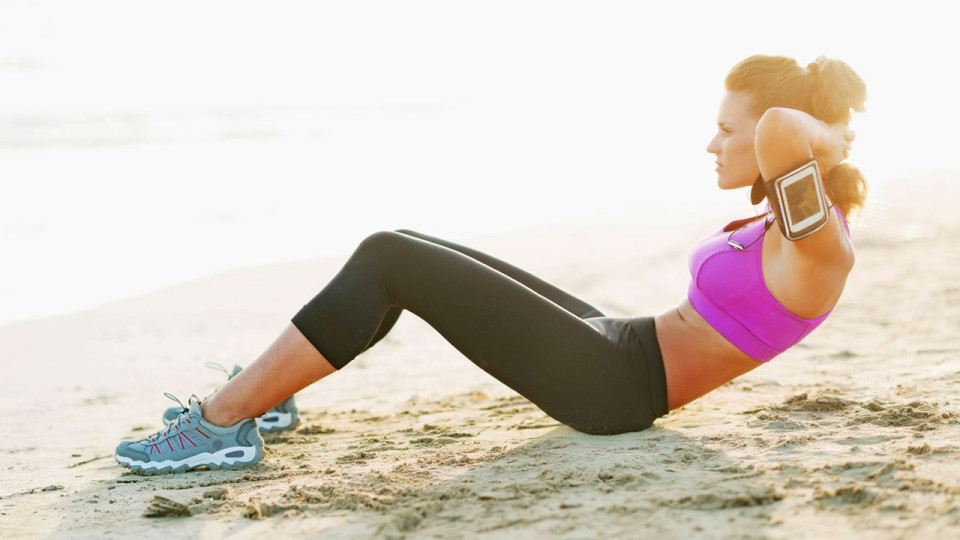The strengthening and training of the “core” of our body has become a very popular concept among various communities and groups, ranging from elite athletes to chronic pain sufferers. The concept is sound, but there are quite a few popular misconceptions present, particularly regarding what having a stable and strong core really means.
What is the “Core”?
If you imagined only the abdominals as the word “core” appears then it is a misconception. The rectus abdominis is just one out of the many muscles in our core. When you’re looking for more information in the future, note that established articles always state core “muscles” and not core “muscle”!
Here’s where the largest misconception lies: The core isn’t simply just your “6 pack”. While this “6 pack” (otherwise known as the rectus abdominis) is the most visible group of core muscles, there are other core muscle groups as well!
From better stability while sprinting to everyday movement, the core muscles will help you everywhere. Remember to properly activate the core muscles, as other muscles (especially our arms and legs) can over-assist after a few reps, leading to decrease of efficiency in the targeted muscle group.
Planning a Day for Your Core
Here’s an example of a “core day” where every aspect of the core will be trained and strengthened. A good rep range would be 10-30 (depending on your body weight and fitness), with less than 30 seconds’ rest in between each exercise!
Transverse Abdominis Exercise: Russian Twist
- Grab a small dumbbell or medicine ball, and sit down with your hips and knees bent 90 degrees.
- Slowly lean backwards, until your back is kept off the ground at 45 degrees. The torso should be kept straight.
- Lift your legs off, cross your legs, and twist your arms from side to side.
The Russian Twist exercise works out your transverse abdominals, which are the ‘deep’ muscles that are important for stabilising your spine. If you’re new to this exercise, do it without the weight, cupping your hands around your ears instead. Remember to breathe normally during this exercise!
Rectus Abdominis and Abdominal Obliques: Alternating Crunch
- Lie flat on the floor, and bend your hips and knees 90 degrees, and feet flat on the ground.
- With your hands cupped behind your ears, roll your upper back away from the floor and twist to one side.
- Return slowly to the starting position, and repeat for the other side.
The Alternating Crunch isolates the outer unit of your core muscles (the obliques), while maintaining control of your inner unit (the “6 pack”). You can put a rolled up towel or yoga mat to protect your lower back as well.
Hip Flexors: Seated Leg Tucks
- This exercise should be done while sitting on a bench.
- While holding the bench with your hands, lean your upper body backwards to around 45 degrees, while lifting your legs off the ground to a position that is slightly below parallel to the floor.
- Bring your knees up towards your chest, while bringing your torso towards your knees at the same time.
- Slowly return to your starting position, and repeat.
While the Seated Leg Tucks work out your entire group of core muscles, it targets the hip flexors in particular, which are an often neglected muscle group that is essential for running.
Functional Stability Exercise (Entire Core): Burpees
- Begin in a standing position, with your legs shoulder-width apart.
- Drop into a squat position with your hands on the ground.
- Kick your feet back, while keeping your arms extended.
- Perform a pushup.
- Immediately kick your legs back close to your chest.
- Jump up, and land back to the standing position with your legs shoulder-width apart.
Burpees bring balance and coordination to your entire body, while working the entire set of core muscles and a little more besides.
Burpees are a little more complicated, so go slow and watch the video if it’s your first time! This exercise is also very good for cardiovascular fitness, so you’ll be able to have more endurance while running.
Work Out Your Core and Prevent Injuries!
Remember that good form and full range of motion triumphs over tempo while you are doing your core exercises!
You can also consider adding the Prone Mountain Climbers into this set of exercises too.
The benefits of having a good core basically sounds almost like the definition of general fitness: You will be able to perform daily tasks, especially physical activities without undue fatigue, and even have excess/reserve energy for emergencies.
This is because when we wake up and sit up from our bed we pretty much start to use our core muscles. Our lower back is what helps keep us in an upright posture, while our abs and transverse abs and hip flexors support the movement of shifting our lower limbs (legs) forward while running.
The most important benefit would be injury prevention. A strong core usually means a stable grounding and better limb coordination, and you are in better control of your bodily movements and actions produced all the time!





